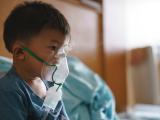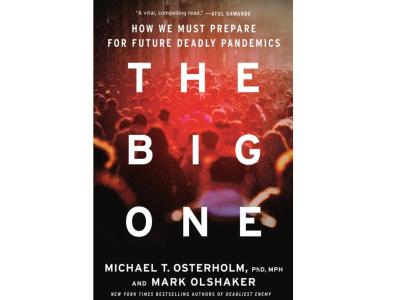Mar 25, 2008 (CIDRAP News) Recent pandemic influenza response exercises have helped the Centers for Disease Control and Prevention (CDC) improve its tools for making policy decisions quickly, according to senior CDC officials.
Before a large-scale exercise conducted earlier this month, the agency set up a "planning cell" of leaders who were insulated from the need to respond immediately to events so they could think carefully about policy issues raised by the emergency, officials said. In the exercise, on Mar 11 and 12, the new group made a noticeable impact on the CDC's ability to make decisions, according to Dr. Richard Besser, director of the CDC's Coordinating Office for Terrorism Preparedness and Emergency Response.
"One thing I was struck by was that we did a much better job of reaching decisions quickly, and it's critical that in a crisis we do that," Besser said in a recent interview about the results of the exercise.
The latest exercisethe fourth in a series that began in January 2007featured a simulated emerging US epidemic sparked by a traveler from Southeast Asia infected with a mutated H5N1 virus. The March exercise dealt with days 6, 7, and 8, during which cases climbed from 273 to well above 300, with a 10% fatality rate. The exercise had states seeking guidance on when to close schools and take other "community mitigation" steps, while the CDC shipped antiviral drugs to the states and decided to screen air travelers in an effort to slow the virus's spread to places like Alaska, Hawaii, and Puerto Rico. (For a story on the exercise, see link below.)
Escaping 'the tyranny of the urgent'
CDC spokesman Von Roebuck said the idea for the new planning group stemmed from previous pandemic exercises. In some of them the CDC designated a special team to assist staff members actively engaged in the response, which proved to be very helpful, he explained. "This idea helped spawn and make the planning group a more formal entity for pandemic response," he added.
Dr. Daniel Jernigan, deputy director of the CDC's Influenza Division, said the aim in setting up the planning cell was to free leaders from some of the immediate pressures of the situation so they could think more deliberately about policies.
"What we recognize is that in the midst of a large event, there's a tyranny of the urgent that overcomes the groups, where there's a constant need to respond and react," Jernigan said. "And we felt it was vitally important to have a group of people that were removed from the constant pressure of the urgent so they could have a thoughtful approach to the development of policy on the fly."
The "plans unit" consists of 12 to 15 planning experts and subject-matter experts, who can call on other specialists when needed, Jernigan said. They unit includes specialists in influenza, quarantine, healthcare quality, communications, logistics, and legal issues. Their assignment is to deal with issues that require a more thoughtful approach, such as steps that "are costly, require multiple partners for implementation, or could lead to a strategic change in direction," he said.
Jernigan said the approach "may not be a novel concept," but using it in responding to a large-scale infectious disease event is new for the CDC. "It will help to assure that we're not missing in our forecasting of potential problems but also are not forgetting to come up with all the options in the midst of the crisis," he said.
The CDC is training specialists in other areas so that the planning-cell approach can be used in responding to other kinds of emergencies, such as bioterrorist attacks, not just a flu pandemic, Jernigan added.
Dealing with regional differences
Besides demonstrating the value of the approach, the latest pandemic exercise yielded some lessons about information flow and about tracking of containment efforts, according to Besser and Jernigan.
Besser said the exercise marked the first time a state health departmentGeorgia'sparticipated with the CDC in a pandemic drill. A resulting observation was that "we have work to do regarding information flow," he said. "It's critical that we all have a common operating picture, that we're viewing the same set of information and the same facts. We made a lot of progress in terms of the operating picture at the CDC, but we need to work on systems for sharing information at the state and local level."
Besser said there were some technical glitches in data transferring and video conferences. In addition, "We need to revisit some of our thoughts about how we would be sharing information with states and locals."
The exercise also showed that the CDC needs to pay more attention to the fact that a flu pandemic will unfold in different ways and at varying rates in different parts of the country, according to Besser.
"What you see with a pandemic is that states aren't affected in a uniform fashion, and not all areas within a state are affected the same," he said. "We need to develop a system for tracking what kinds of containment strategies are being used in what parts of the countrywho's using a case-by-case strategy, who's using the community mitigation strategies. We want to identify what is working and what is not, so that as new areas are affected, we can make evidence-based recommendations."
Jernigan said the agency is working on a way to characterize the different "intervals" or phases of a pandemic. The plan is to include that information in guidance for state and local health officials, in the hope that it will help them with decisions such as when to begin community mitigation steps.
The CDC plans to conduct another large-scale pandemic exercise in September to extend the scenario used in the previous four. "In the September exercise we're going to be shooting to have more states playing with us in real time," said Besser.
He said the agency intends to run a pandemic exercise that will simulate a sizable share of CDC employees being out sick with the flu, but it remains to be decided whether that challenge will be included in the September event. "It's critical to decide what functions we won't be doing as an agency and how critical functions are covered," he said.
See also:
Mar 17 CIDRAP News story "CDC pandemic exercise highlights drug, travel, mitigation issues"




















